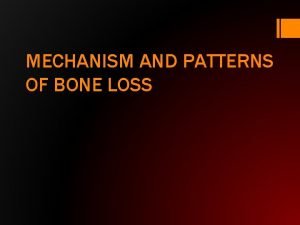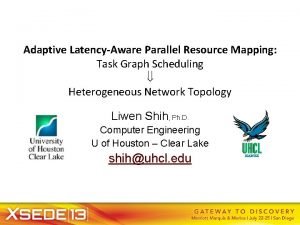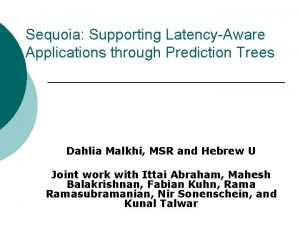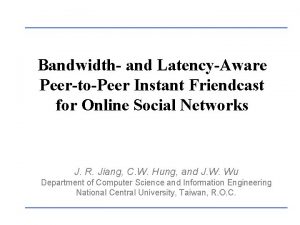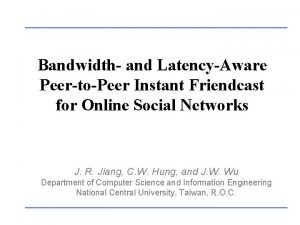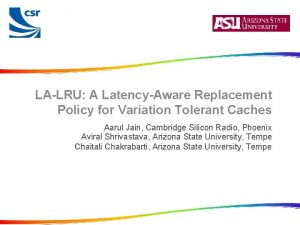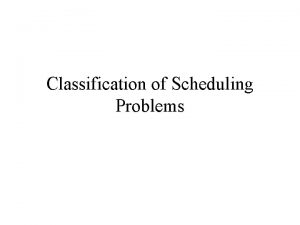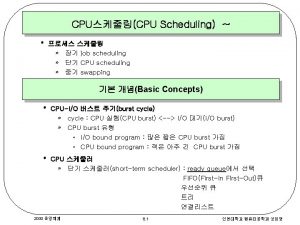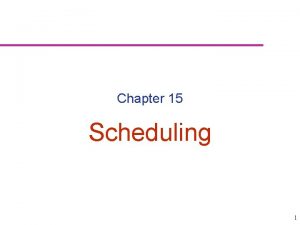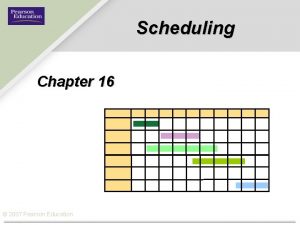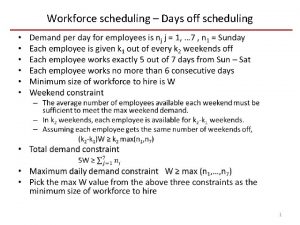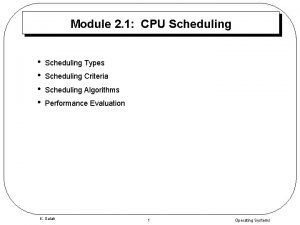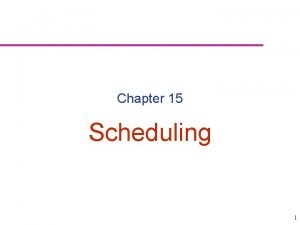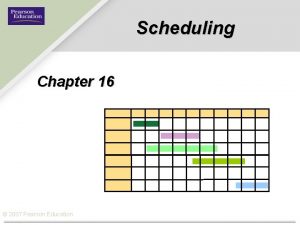v Fair LatencyAware Fair Storage Scheduling via PerIO




























- Slides: 28

v. Fair: Latency-Aware Fair Storage Scheduling via Per-IO Cost-Based Differentiation Hui Lu, Brendan Saltaformaggio, Ramana Kompella, Dongyan Xu ACM Symposium on Cloud Computing 2015 (So. CC'15)

OUTLINE • • • Introduction Background & Motivation Design Evaluation Conclusion

Introduction(1/4) • In virtualized data centers, multiple VMs are consolidated to access a shared storage system • Sharing physical hardware among many virtual machines (VMs) offers several benefits – Improved utilization – Agility in resource provisioning required for modern applications.

Introduction(2/4) Proportionally sharing available storage IO resources

Introduction(3/4) Asynchronous Synchronous request Asynchronous request Existing schedulers such as Linux CFQ or SFQ can provide reasonable fairness

Introduction(4/4) • v. Fair: a novel block-level proportional share scheduling framework. • Provide both strict proportional sharing of storage IO among multiple VMs and high storage utilization, regardless of IO patterns.

OUTLINE • • • Introduction Background & Motivation Design Evaluation Conclusion

Background • storage access patterns: – Direction(read / write) – Location(sequential / random) – Parallelism(synchronous / asynchronous) • Synchronous => low IO-concurrency • Asynchronous => high IO-concurrency – Block size

Motivation(1/3) • Illustration of Unfairness

Motivation(2/3) • Investigating the Cause of Unfairness IO scheduler (work-conserving) VM 1 VM 2 … VM 2 syn asyn … asyn syn VM 1 The asynchronous requests accumulate much faster than the synchronous requests in the IO scheduler’s request queues.

Motivation(3/3) • Investigating the Cause of Unfairness IO scheduler (non-work conserving) ACK ➭ further hurt overall storage efficiency Idle time

OUTLINE • • • Introduction Background & Motivation Design Evaluation Conclusion

Per-IO Cost Allocation Model(1/9) •

Per-IO Cost Allocation Model(2/9) VM 1 T (total storage service time) VM 2 T (total storage service time)

Per-IO Cost Allocation Model(3/9) VM 1 VM 2 VM 1: VM 2:

Per-IO Cost Allocation Model(4/9) •

Per-IO Cost Allocation Model(5/9) •

IO Resource Scheduling Strategy(6/9) • VM 2(seq access 100%) VM 1(seq access 100%) 1 Random IO pattern 2 1 3 100 4 2 101 3 101 102 4 103

IO Resource Scheduling Strategy(7/9) • Blender-oblivious proportional share (BOPS)

IO Resource Scheduling Strategy(8/9) • Blender-aware proportional share (BAPS) Best case Worst case Reduction VM 1 4000 600 3400 85% VM 2 600 0 0% Best case Allocation VM 1 4000 2300 1700 42. 5% VM 2 600 345 255 42. 5% Reduction *VM 1_weight *VM 2_weight

IO Resource Scheduling Strategy(9/9) • Blender-aware strict proportional share (BSPS) Best case Allocation VM 1 4000 600 VM 2 600 Best case Allocation VM 1 4000 1043 VM 2 600 156

OUTLINE • • • Introduction Background & Motivation Design Evaluation Conclusion

Evaluation(1/4) • We launch three VMs with each running the microbenchmark Fio • VM 1 to emulate low IO-concurrency workloads with small IO size (16 KB) • VM 2 and VM 3 to emulate high IO-concurrency workloads with large IO size (64 KB and 128 KB).

Evaluation(2/4) •

Evaluation(3/4) • less-backlogged case

Evaluation(4/4) • non-backlogged case IO blender effect

OUTLINE • • • Introduction Background & Motivation Design Evaluation Conclusion

Conclusion • v. Fair achieves fairness among sharing VMs while maintaining high resource utilization, regardless of the VMs’ workloads and IO patterns. • Our evaluation with micro-benchmarks and realistic applications indicates the effectiveness of v. Fair, compared with state-of-the-art techniques.
 Job scheduling vs process scheduling
Job scheduling vs process scheduling Via erudita e via popular
Via erudita e via popular Via positiva and via negativa
Via positiva and via negativa Que es la via lucis
Que es la via lucis Lesion primera y segunda motoneurona
Lesion primera y segunda motoneurona Via crucis y via lucis
Via crucis y via lucis Embrazür nedir
Embrazür nedir Internal reverse bevel incision
Internal reverse bevel incision Reverse architecture of bone
Reverse architecture of bone Crater
Crater Full mouth disinfection
Full mouth disinfection Gbr perio
Gbr perio Slidetodoc.com
Slidetodoc.com Malek periodontics
Malek periodontics Srd perio
Srd perio Reverse architecture of bone
Reverse architecture of bone Enap periodontal adalah
Enap periodontal adalah Michael de perio
Michael de perio Tissue regeneration
Tissue regeneration Uses rigid metallic platters
Uses rigid metallic platters Unified storage vs traditional storage
Unified storage vs traditional storage Primary storage and secondary storage
Primary storage and secondary storage Primary storage and secondary storage
Primary storage and secondary storage Foul is fair and fair is foul literary device
Foul is fair and fair is foul literary device Significa fair play
Significa fair play Fair is foul and foul is fair literary device
Fair is foul and foul is fair literary device Examples of fair is foul and foul is fair in macbeth
Examples of fair is foul and foul is fair in macbeth Fair is foul and foul is fair macbeth meaning
Fair is foul and foul is fair macbeth meaning Shakespearean sonnet
Shakespearean sonnet















